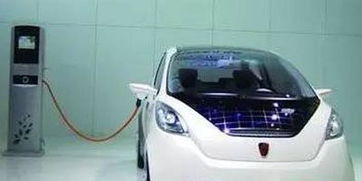新能源汽车快充设备
Fast charging technology plays a crucial role in the development and adoption of new energy vehicles (NEVs), especially electric vehicles (EVs) and plugin hybrid electric vehicles (PHEVs). In this article, we will delve into the key aspects of fast charging technology for NEVs and discuss its implications for the industry.
1. Why Fast Charging Technology is Important for NEVs
Fast charging technology allows NEV owners to recharge their vehicles quickly and conveniently, addressing the issue of range anxiety and enabling longdistance travel. With fast charging stations becoming more widespread, drivers can significantly reduce the time needed to recharge their vehicles, making NEVs more practical for daily use.
2. Types of Fast Charging Technologies
There are primarily three types of fast charging technologies used for NEVs:
- DC Fast Charging: Direct current (DC) fast charging is currently the most common and fastest charging method for NEVs. It can charge a vehicle up to 80% in around 30 minutes, depending on the battery capacity.
- AC Fast Charging: Alternating current (AC) fast charging is another option, but it is generally slower compared to DC fast charging. It is suitable for overnight charging at home or in workplaces.
- Wireless Charging: Wireless charging technology is still in the early stages of development for NEVs. It allows for convenient charging without the need to plug in the vehicle, but the charging speeds are currently slower than traditional wired charging methods.
3. Key Considerations for Fast Charging Technology
When implementing fast charging technology for NEVs, several factors need to be taken into account:
- Battery Compatibility: Fast charging can have an impact on battery life and performance. Battery manufacturers need to ensure that their products are compatible with fast charging protocols to optimize charging efficiency and minimize degradation.
- Infrastructure Development: Building a widespread network of fast charging stations is essential for the widespread adoption of NEVs. Governments, companies, and other stakeholders need to collaborate to expand the charging infrastructure and make it more accessible.
- Standardization: Standardizing fast charging protocols is crucial to ensure interoperability between different vehicles and charging stations. Common standards such as CHAdeMO, CCS, and GB/T are widely used in the industry.
- Safety and Reliability: Fast charging systems must meet stringent safety and reliability standards to protect both the vehicle and the user. Regular maintenance and monitoring are essential to prevent malfunctions and accidents.
4. Future Trends in Fast Charging Technology

Looking ahead, several trends are shaping the future of fast charging technology for NEVs:
- UltraFast Charging: Researchers and manufacturers are working on ultrafast charging technologies that can reduce charging times even further, potentially charging a vehicle in a matter of minutes.
- Bidirectional Charging: Bidirectional charging systems allow NEVs to not only consume electricity but also feed it back to the grid, enabling vehicletogrid (V2G) capabilities and enhancing the overall energy ecosystem.
- Smart Charging Infrastructure: IoT technology and smart grids are being integrated into fast charging infrastructure to optimize charging schedules, balance grid loads, and reduce energy costs for both users and utilities.
5. Conclusion
Fast charging technology is a critical enabler for the mass adoption of new energy vehicles, providing convenience, flexibility, and sustainability for drivers and the environment. By continuing to innovate and collaborate, the industry can overcome current challenges and drive towards a future where fast charging is the norm rather than the exception.
标签: 新能源汽车快充技术 新能源汽车快充系统充电流程 新能源汽车快充头
相关文章
-
露天煤业,能源开采的新篇章详细阅读

亲爱的读者,今天我们将一起探索一个既古老又现代的话题——露天煤业,煤炭,作为人类历史上最重要的能源之一,它的开采方式一直在不断进步,而露天煤业,正是这...
2025-10-02 256
-
上投内需基金,洞察中国消费升级趋势的投资利器详细阅读

在全球化的大背景下,中国作为世界第二大经济体,其内需市场的巨大潜力正逐渐成为全球投资者关注的焦点,随着中国经济结构的转型升级,消费已成为拉动经济增长的...
2025-10-01 200
-
东方财富证券网,数字化浪潮下的金融信息平台详细阅读

在数字化时代,信息的流通速度和获取方式已经发生了翻天覆地的变化,东方财富证券网作为中国领先的金融信息服务平台,正是这一变革的见证者和参与者,本文将深入...
2025-09-30 199
-
信达证券,中国资本市场的领航者详细阅读

在当今快速发展的金融市场中,信达证券作为中国资本市场的重要参与者,扮演着举足轻重的角色,本文将深入探讨信达证券的业务范围、市场地位、以及其在推动中国资...
2025-09-28 186
-
金龙汽车,中国商用车领域的领军者详细阅读

金龙汽车,作为中国商用车领域的领军企业,以其卓越的品质和创新技术在国内外市场上赢得了广泛的赞誉,本文将深入探讨金龙汽车的发展历程、产品线、技术创新以及...
2025-09-27 201
-
国投瑞银稳定增利,稳健投资的新选择详细阅读

在当前经济形势下,投资者对于稳健投资的需求日益增长,国投瑞银稳定增利作为一种低风险、稳健收益的投资产品,逐渐成为投资者关注的焦点,本文将深入探讨国投瑞...
2025-09-27 192
-
英镑实时汇率,掌握货币市场的脉搏详细阅读

在全球化的经济体系中,货币汇率的波动对个人投资者、企业以及国家经济都有着深远的影响,英镑作为世界上主要的储备货币之一,其汇率的实时变化对于从事国际贸易...
2025-09-27 180
-
美元指数的波动,影响因素、市场动态与新浪财经的角色详细阅读

在全球化的经济体系中,货币汇率的波动对国际贸易、投资和金融市场都有着深远的影响,美元指数(DXY)作为衡量美元相对于一篮子外币价值的指标,其变化不仅牵...
2025-09-27 127
